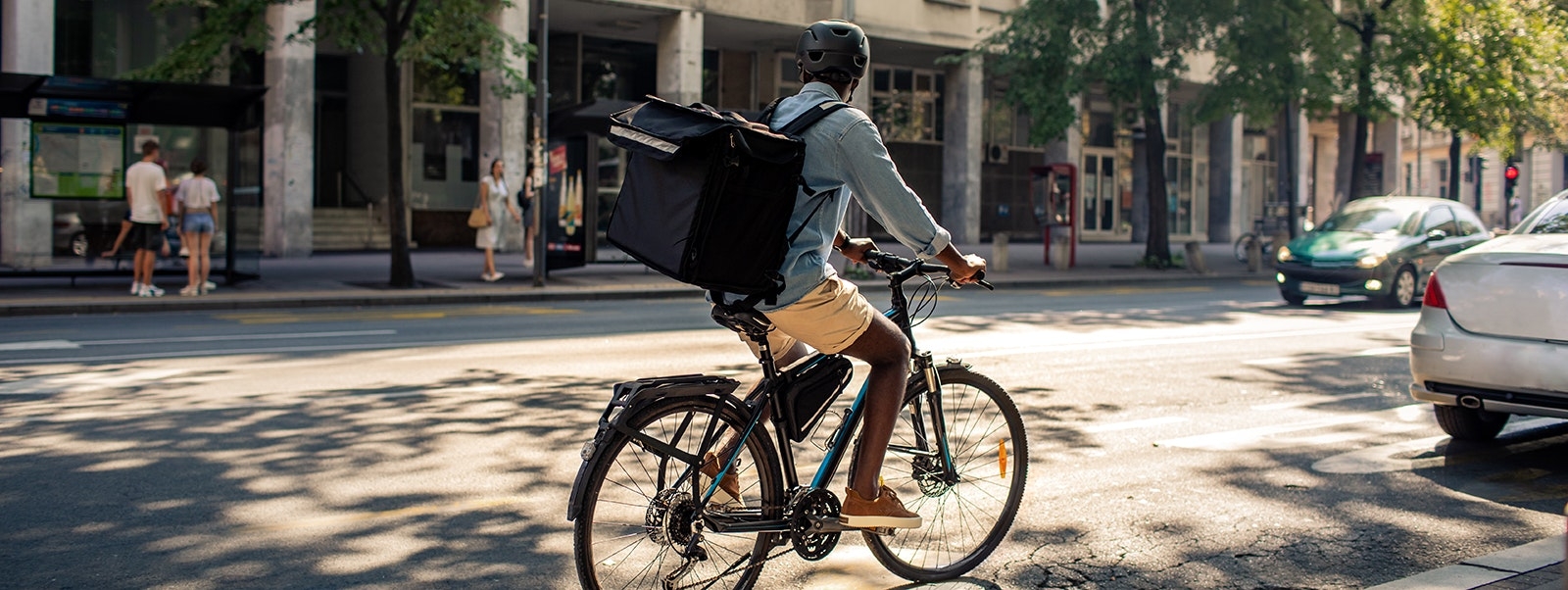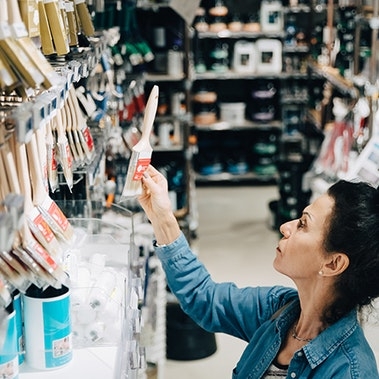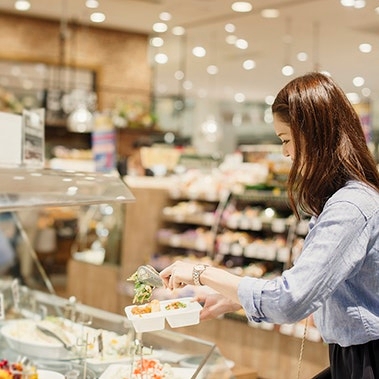When we published Retail’s Revolution in 2018, we thought we were describing digitization trends that would take hold from 2025 to 2030. Looking around, it’s clear we were nearly a decade too late in that assessment. What has changed?
COVID-19 increased the consumer demand for digital shopping as many consumers sheltered at home. Some retailers fell way to longstanding shifts in consumer preferences, such as casualization in apparel. Others naturally benefited from quarantine-driven consumer patterns such as cooking from home and a rise in demand for at-home fitness equipment.
The retailers who will recover most strongly are those who evolved to meet consumer demands by adapting their business model. The winners of Retail 2021 will be those who can enrich the digital experiences and thereby can avoid the risks of disintermediation we discussed in the report.
We interviewed three leaders in retail to get their perspective on strategies to find success amid COVID and what tomorrow’s winners are doing today: Mark Cosby, specialty retail CEO full interview in Curb(side) Your Enthusiasm. Marc Poulin, the former CEO of Sobey’s, full interview featured in Can the Grocery Boom Last? As well as Richard Pennycook, former BRC chairman and Coop UK CEO in Supermarket's Strength During COVID-19, full interview below.
Jim Bacos: Thank you for taking the time to speak with me. You were one of the core architects of the 2018 white paper that we called Retail’s Revolution, where we predicted massive change over five to ten years. In 2020, COVID entered and changed our lives. How will it impact Retail’s Revolution?
Your career has been mostly grocery. Where do you see things changing and what has been the impact of what's happened to us over the last five months? And how much of it is transitory, and how much of it is permanent?
Richard Pennycook: It's been very interesting in the grocery space. When I was in that industry, I always felt it was world class. And was also frustrated that big boxes, which were economically the most efficient parts of the supply chain, were out of favor with the consumer – despite the economic efficiency they may have had.
What we've seen over the last few months is evidence of the quality of that supply chain. So in most parts of the world, but certainly in the UK, people haven't been talking about starving despite the lockdown. And the food supply chain has continued to work extremely well here. The big boxes have seen a huge step-up.
Alongside that behavioral shift back into big boxes, food retailers are having Christmas every week at the moment. What will be interesting, as it always is, is to what extent does that behavioral change become entrenched, and to what extent do consumers go back to their previous routine. I think, as always, the answer will be some and some.
In the financial crisis in 2008/2009, when we came out the back of that, the big boxes supermarkets put through price rises. And therefore, in the UK, they gave the opportunity for the discounters to get a foothold.
This time around I think the big supermarkets are much more competitive on price, and the management teams remember the mistakes they made last time. So there's some possibility, I think, that this reversion to pre financial-crisis shopping behavior may stick at least to a degree. People have gone away from frequent shopping in small baskets across multiple fascia back to much bigger baskets infrequently from one store. And I wonder if they will recognize that in terms of their time efficiency, it’s a pretty effective way to shop.
If the companies could eliminate friction, then the consumer was very happy to go online
The other part of this that plays directly to Retail’s Revolution is we always said that there were very few barriers to digital shopping from the point of view of the consumer. If the companies could eliminate friction, then the consumer was very happy to go online. And we've seen that huge demand for online grocery on the back of lockdown. The companies have geared up to try and address some of it, but they're nowhere close to being able to fulfill the demand. I wonder whether another feature that comes from this period might be that they increase the capacity of their online channel to meet more of the latent demand, but with more focus on the economics and profitability of it than they were in the past. So instead of artificially suppressing an unprofitable channel they may start to price it economically.
Jim: How much sense will it make for grocers to begin investing in a real online delivery capability? Or is this more about investing in click and collect, rather than trying to control the last mile - and ensuring that you have a supply chain flexible enough to flex up and down if in fact the pandemic is something that is a three-year story rather than a four to six months story and hedge your bets.
Richard: That's where I hedge my bets. The precise demand supply matching in the UK isn't clear at the moment, because we negotiated many competition law waivers and credits from the UK Government. And the quid pro quo for that was that the supermarkets would look out for vulnerable people and, therefore, they've assigned quite a lot of their last mile capacity to people who wouldn't normally be their online shoppers.
I guess when we come out of that phase, there is demand from a higher demographic that will pay properly for delivery, and I think the supermarkets will be minded to service them.
For the lower demographics, I'm not entirely sure which way they're going to go, and it won't be a digital experience. I'm not sure to what extent they continue with this new shopping routine of big baskets once a week, which is how people used to shop, or whether they will go back to the kind of post financial crisis behavior of using that time to shop for bargains and having a much broader repertoire around the discounters. I’m not sure where that balance will settle, but as I mentioned, I think that the big box stores are certainly much more competitive than they were, so they're in a better place to keep those customers in the aftermath of this. As regards digital grocery, this isn't a segment which is going to go to 50 percent penetration, but it was seven or eight percent before the crisis, and I think it could easily go to 14 or 15 on the back of this.
Jim: I've been surprised how long it took to get to the seven or eight percent. Even at 15 percent, will companies be able to justify the types of investments that are going to be required to deliver the last mile rather than just consolidate a Click and Collect offering.
If you look at the big boxes, much of their floor space is dedicated to non-food. Do you think that that is something that can continue? Let's say that consumers actually say “we like the big boxes” - do they also migrate their basket towards the non-food offerings or is non-food just going to be handled online by other players?
Richard: Again, that's a really interesting question. On the non-food bricks and mortar side, as you know right now, it's an existential question as to how much of that can reopen and to what extent are governments around the world prepared to support what could be a very gradual recovery.
So what we may see is that there is some shift back again to the non-food categories that are sold in the big boxes, because their space effectively is a sunk cost in the UK. There's a huge shift to online, but there is plenty of product which still isn't ideally suited to the online channel. So I think that is another opportunity for the big box stores, as noted they've being having a tough time in some of those categories. But from memory, Tesco, Asda, and Sainsbury’s between them are far and away the biggest clothing retailers in the UK. They're going to see a lot of retailers disappear from the high street.
Jim: Put your CFO hat on and think about your supply chain. Would you shorten it, make it less global, would you be considering going back to a supply chain structure that was more like it was 20 or 25 years ago or is that impossible?
Richard: That is very interesting. When COVID-19 arrived in Italy, a few of us went to see the UK government and said this thing is coming and we need to know that we can feed the nation in the coming few months.
And we did some modeling around that. We've come out of this, so far at least, better than that modeling would suggest in terms of the way that international supply chains have held up. And it surprised a lot of people. Unless this government and other governments really decide to focus, as a matter of policy, on food security within their own borders, then I suspect we will go back to supply chains that looks pretty similar to what they were before. And that does surprise me.
We've come out of this, so far at least, better than that modeling would suggest in terms of the way that international supply chains have held up
Jim: Let me turn to another phenomenon that we've observed in the United States. Over the last ten years the share of out of home consumption of food has surpassed 50 percent. And that has made a dent in the overall volumes of grocery. And now in one fell swoop, there are no restaurants and people are cooking. And they had to be educated on how to cook. Do you see that as an opportunity for groceries to make headway into a new segment - prepared meals for home delivery?
Richard: That's fascinating and I’m sure models along those lines are going to develop or accelerate. I guess component parts of this is that enormous switch in the UK of about 30 percent of meal occasions that were out of home, but by and large are now in-home. There is some sense that consumers are enjoying that: reconnecting with their families, cooking again, and eating together. And we haven't seen that societally for a long time. Some of that will reverse, but we also know that we're going to come out of lockdown to a pretty cruel recession. So on the economics, we can probably look to 2008/2009 to identify behaviors. Particularly for the lower demographics, the number of out of home occasions reduce significantly. So as you go through what could be a long recovery here, the in-home piece is going to be much higher and to the extent that there are offerings around prepared-for-you and brought to your home - it could be a big market.
Jim: I think it's fascinating because the opportunity is enormous. Taking a substantial chunk out of out-of-home eating and getting it back into grocery revenues would be a huge boost to revenues and volumes. And I'm wondering if anybody out there is thinking about it in the UK.
Richard: I’m sure they are. They will need help to figure it out, because this is supply side and demand side. On the supply side, unless there is some sort of miraculous recovery from COVID-19, we’re in a protracted period of social distancing where the economics of out of home hospitality and leisure just don't work.
Jim: As somebody who's been in the business for a long time - how optimistic or pessimistic, are you about retail over the next two to three years?
Richard: That becomes a pretty philosophical question. On the food side, I'm pretty optimistic. On the non-food side, I’m positive about this development, because I think what happens is that Retail’s Revolution instead of taking five to 10 years, is going to take six months to a year. The slow death by a thousand cuts we were seeing for a lot of the traditional retailers, it's just going to happen so much faster.
How many department store chains are going to re-open all of their stores coming out of this – my guess is none. And I imagine some of them won’t reopen at all.
Jim: So there will be a bloodletting within six months to one year, there'll be gone. What do you think is going to replace that? Is it just going to be online? Are we going to have a lot of empty high streets?
Richard: I think we have a lot of empty high streets. And that's the acceleration of the revolution that we were talking about. The extent that impacts on place, communities - that's going to be tough. Demand overall will be lower. I think a higher proportion of that will go to the grocers, partly because food will become more expensive off the back of this, and their non-food side will strengthen. And we know that there's going to be a big switch into online. And so the piece that's available for traditional bricks and mortar in places is going to be so much reduced.
I think it presents government with a real issue societally about whether they just let it happen or whether they have to provide support in some way. And if you remember, I touched on that in Retail’s Revolution. But again, if the revolution happens in the next six to twelve months, rather than in the next five years, then there will be societal impacts to deal with. Directly in the UK there are three million people under the Retail’s Revolution umbrella, we expected that to reduce by 30 percent by 2025. But it will be more like 2021 now.
Jim: That is very thought provoking – we are getting is a retail revolution over the span of months rather than half a decade. That is both scary and very interesting.
Thank you, Richard.
Richard Pennycook, former BRC chairman and Coop UK CEO – Richard stepped down as CEO of the Co-op in 2017 in order to pursue a portfolio career, having joined in 2013 as part of a team which saved it from near collapse. He has over 30 years’ experience in retail, starting with the management buyout of Allders in the late 1980s.
Over the years, he has been involved in the growth of J D Wetherspoon and the turnarounds of Laura Ashley, Welcome Break, Bulmers and Morrisons. Richard is Chairman of Howdens Joinery, Manchester-based On the Beach and most recently Birmingham based Two Sister’s Food Group/Boporan Holdings. He’s Co-chair of the Retail Sector Council and also lead non-executive Director of the Department of Education.




